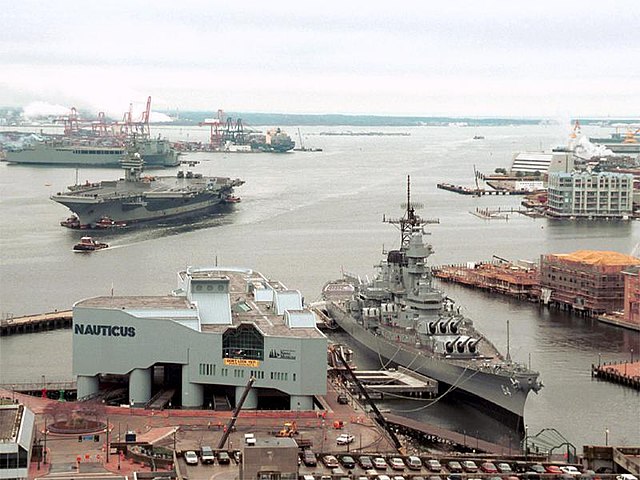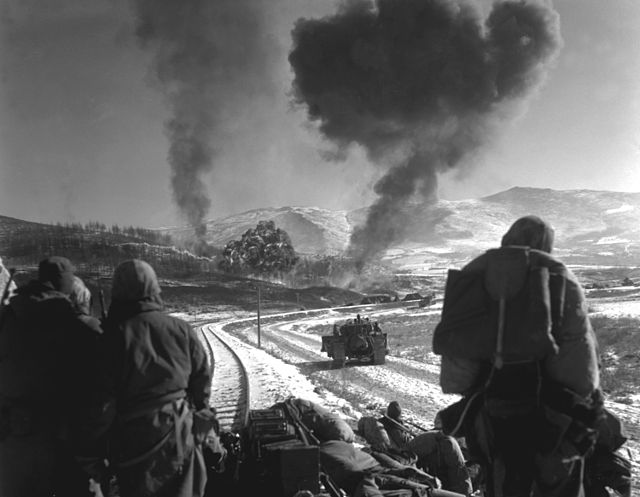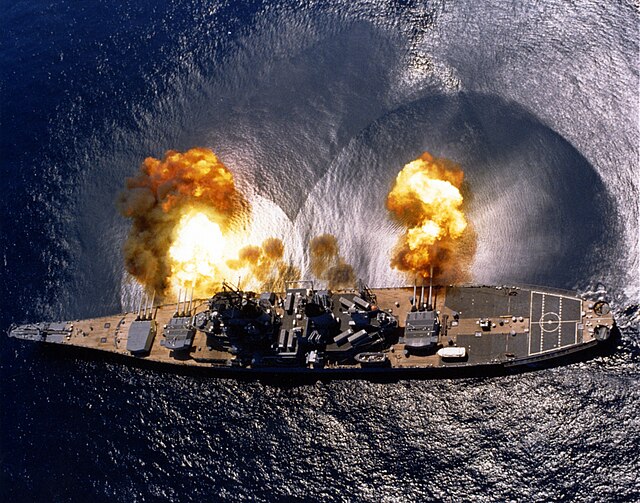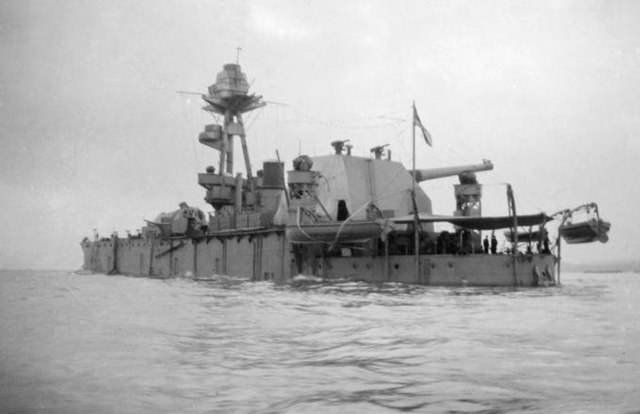United States battleship retirement debate
The United States battleship retirement debate was a debate among the United States Navy, Marine Corps, Congress, and independent groups over the effectiveness of naval gunfire support (NGFS) provided by Iowa-class battleships, and whether or not an alternative should be implemented. The debate centered on the best way to provide fire support for amphibious assault and other troops near a shoreline.
The battleship USS New Jersey fires at positions near Beirut on 9 January 1984 during the Lebanese Civil War.
USS Wisconsin, shown moored in Norfolk, Virginia, is one of four Iowa-class battleships open to the public as museums, and was one of two maintained for potential reactivation until 2009.
5-inch (127 mm) gun on an Arleigh Burke-class DDG
F4U-5 Corsairs provide close air support to U.S. Marines during the Battle of Chosin Reservoir, December 1950.
Naval gunfire support (NGFS), also known as naval surface fire support (NSFS), or shore bombardment, is the use of naval artillery to provide fire support for amphibious assault and other troops operating within their range. NGFS is one of several disciplines encompassed by the term naval fires. Modern naval gunfire support is one of the three main components of amphibious warfare assault operations support, along with aircraft and ship-launched land-attack missiles. Shipborne guns have been used against shore defences since medieval naval warfare.
USS Iowa fires a full broadside of nine 16 in/50 and six 5 in/38 guns during a target exercise near Vieques Island, Puerto Rico, 1 July 1984.
The monitor HMS Marshal Ney, with her single turret trained to starboard (1915)
Stern view of HMS Lord Clive, her 18-inch gun is fitted on a fixed mounting on her quarterdeck, pointing to starboard (November 1918)
The WWI-era (launched 30 June 1917) United States Navy battleship USS Idaho shells Japanese defenses on Okinawa on 1 April 1945.








